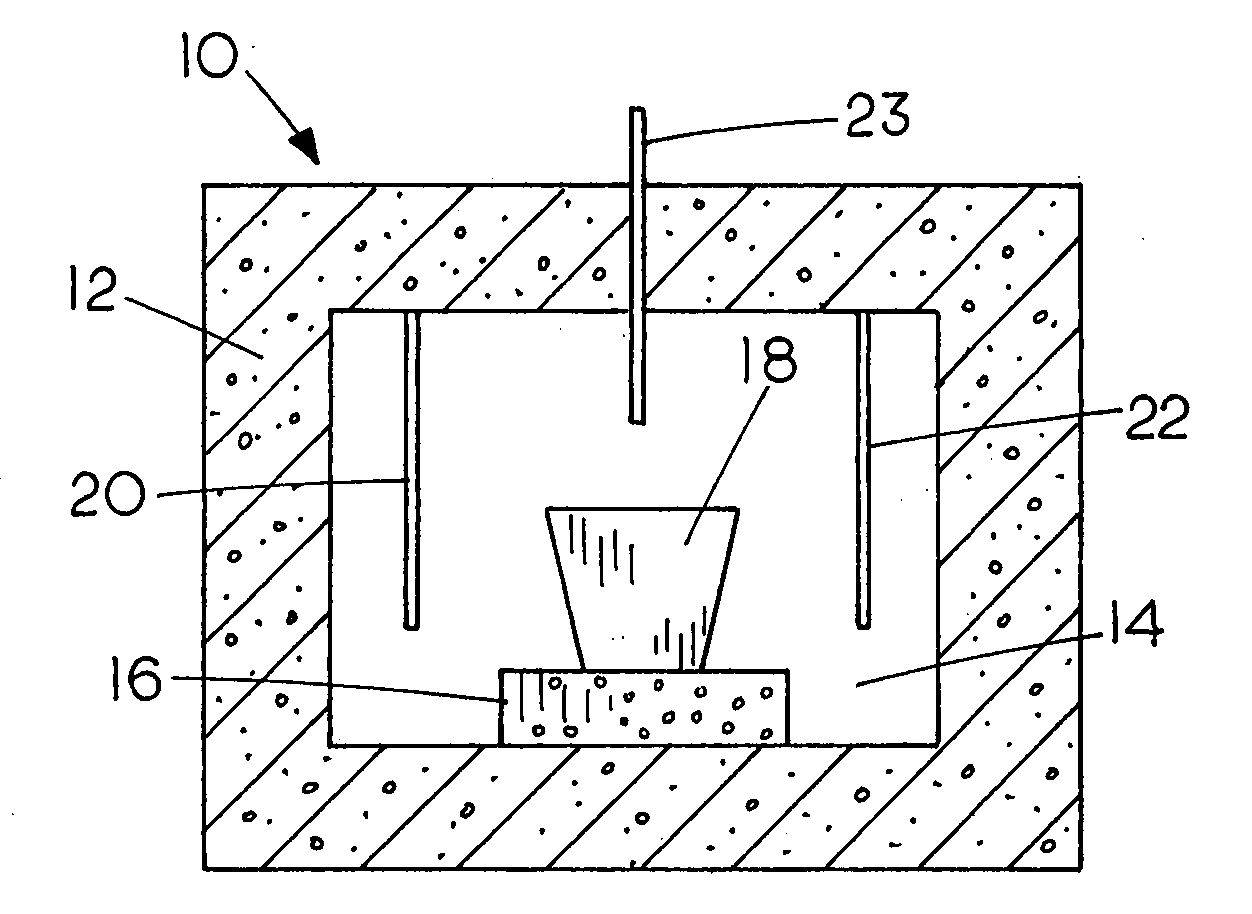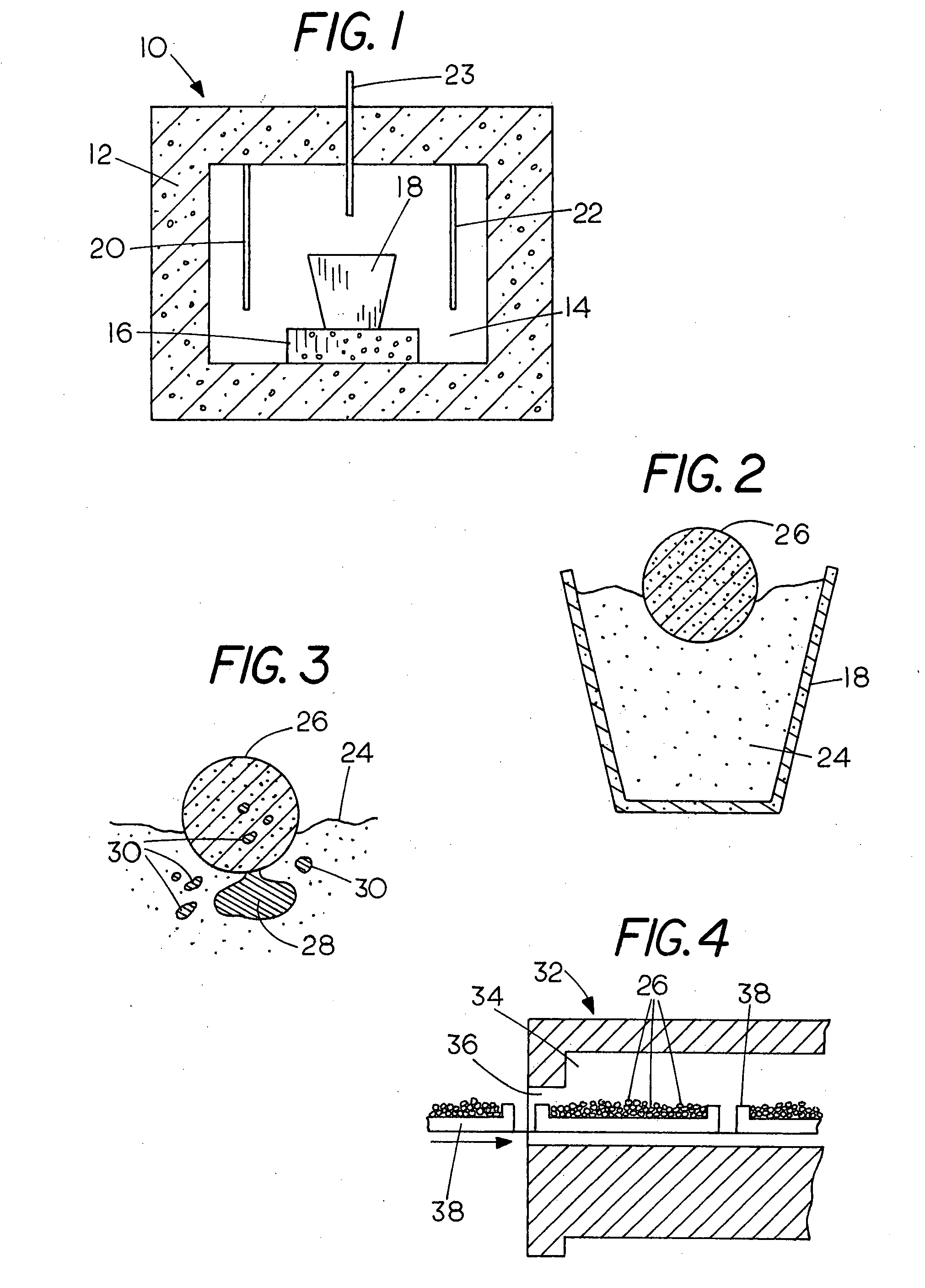Production of iron using environmentally-benign renewable or recycled reducing agents
a technology of reducing agent and renewable or recycled reducing agent, which is applied in the direction of furnace details, furnaces, furnaces, etc., can solve the problems of increasing the level of carbon dioxide in the atmosphere and environmental problems, and achieve the effects of reducing the melting point, convenient shipping, and stable against corrosion
- Summary
- Abstract
- Description
- Claims
- Application Information
AI Technical Summary
Benefits of technology
Problems solved by technology
Method used
Image
Examples
example 1
[0050]An iron ore concentrate comprising magnetite (Fe3O4) from the Empire mine, Ishpeming MI, consisting of particles 90% passing 25-micrometer screen and containing 5% silica was mixed with ground wood comprising Carbondry® wood chips averaging about 1 inch in length and ⅛ inches in thickness provided by Carbontec, Energy Corporation of Bismarck N.D. containing about 5% moisture. The chips were dry ground in a rod mill to pass through a 4.75 mm sieve. A small quantity of wheat flour was also added to act as a binder since the ground wood did not have enough cohesion to be formed into a cohesive mass. The magnetite and ground wood and flour were weighed, mixed together in a kneader-mixer with moisture added to produce slight moistening until the mixture began to agglomerate. The mixture was then formed into balls containing about 25 grams of iron ore concentrate and about 7.5 grams of ground wood chips and wheat flour, resulting in a reductant weight that was 30% of the weight of t...
example 2
[0051]Metallic iron was produced from magnetite in four experiments as in Example 1 except that the firing temperature was reduced to 1425° C. and 1400° C. The feed mixture consisted approximately of magnetite 100 grams, ground wood 30 grams and wheat flour 2 grams. The combined mixture was divided into four portions to form agglomerates containing approximately 25 grams of magnetite, 7.5 grams of ground wood, and 0.5 grams of wheat flour each. A good metallic iron product was produced when the firing time was at least 20 minutes.
example 3
[0052]In a third run, the feed mixture consisted of magnetite 100 grams, ground wood 20 grams and wheat flour 2 grams. The combined mixture was divided into four portions to form agglomerates containing approximately 25 grams of magnetite, 5 grams of ground wood, and 0.5 grams of wheat flour each. The individual pellets were then fired at temperatures ranging from 1375° C. to 1425° C. After firing in the furnace, a good metallic iron nugget product was produced.
[0053]The results obtained from Examples 2 and 3 are shown in Table 1 below:
TABLE 1Mixture RatioHeatingInitialFinishedSampleMagnetite;FurnaceTime,Pellet Wt.,Nugget Wt.,Estimated %ExampleNumberWood; FlourTemp., ° C.MinutesGramsGramsiron recovery21100:30:214251531.4(no slag separation)2100:30:214252032.1313.7882.293100:30:214252531.5413.8284.074100:30:214003031.9414.0784.5235100:20:214252530.2713.8781.266100:20:214252029.6511.5669.147100:20:214003029.9513.1477.818100:20:213753029.6313.0878.28
[0054]The column marked “Initial Pel...
PUM
| Property | Measurement | Unit |
|---|---|---|
| temperature | aaaaa | aaaaa |
| diameter | aaaaa | aaaaa |
| mass | aaaaa | aaaaa |
Abstract
Description
Claims
Application Information
 Login to View More
Login to View More - R&D Engineer
- R&D Manager
- IP Professional
- Industry Leading Data Capabilities
- Powerful AI technology
- Patent DNA Extraction
Browse by: Latest US Patents, China's latest patents, Technical Efficacy Thesaurus, Application Domain, Technology Topic, Popular Technical Reports.
© 2024 PatSnap. All rights reserved.Legal|Privacy policy|Modern Slavery Act Transparency Statement|Sitemap|About US| Contact US: help@patsnap.com









